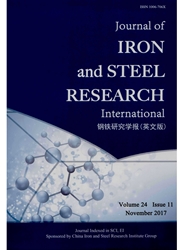

 中文摘要:
中文摘要:
To make full use of the gas resource, stabilize the pipe network pressure, and obtain higher economic benefits in the iron and steel industry, the surplus gas prediction and scheduling models were proposed. Before applying the forecasting techniques, a support vector classifier was first used to classify the data, and then the filtering was used to create separate trend and volatility sequences. After forecasting, the Markov chain transition probability matrix was introduced to adjust the residual. Simulation results using surplus gas data from an iron and steel enterprise demonstrate that the constructed SVC-HP-ENN-LSSVM-MC prediction model prediction is accurate, and that the classification accuracy is high under different conditions. Based on this, the scheduling model was constructed for surplus gas operating, and it has been used to investigate the comprehensive measures for managing the operational probabilistic risk and optimize the economic benefit at various working conditions and implementations. It has extended the concepts of traditional surplus gas dispatching systems, and provides a method for enterprises to determine optimal schedules.
 英文摘要:
英文摘要:
To make full use of the gas resource, stabilize the pipe network pressure, and obtain higher economic benefits in the iron and steel industry, the surplus gas prediction and scheduling models were proposed. Before applying the forecasting techniques, a support vector classifier was first used to classify the data, and then the filtering was used to create separate trend and volatility sequences. After forecasting, the Markov chain transition probability matrix was introduced to adjust the residual. Simulation results using surplus gas data from an iron and steel enterprise demonstrate that the constructed SVC-HP-ENN-LSSVM-MC prediction model prediction is accurate, and that the classification accuracy is high under different conditions. Based on this, the scheduling model was constructed for surplus gas operating, and it has been used to investigate the comprehensive measures for managing the operational probabilistic risk and optimize the economic benefit at various working conditions and implementations. It has extended the concepts of traditional surplus gas dispatching systems, and provides a method for enterprises to determine optimal schedules.
 同期刊论文项目
同期刊论文项目
 同项目期刊论文
同项目期刊论文
 期刊信息
期刊信息
